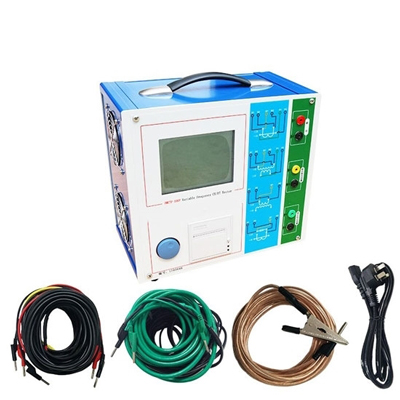How to Use Current Transformer Tester?
Welcome to the world of precision testing with our cutting-edge current transformer tester! In this blog post, we'll walk you through the steps to harness the full potential of your tester, ensuring accurate measurements and a seamless testing experience.
Safety First
Before diving into the testing process, let's emphasize the importance of safety. Familiarize yourself with the equipment, wear the recommended personal protective equipment (PPE), and ensure the current transformer is safely isolated from the system.

Seamless Setup
- Connect to a Stable Power Source: Ensure your Current Transformer Tester is connected to a reliable and stable power source as directed by the manufacturer. This step is crucial to guarantee uninterrupted testing and accurate results. Check the power requirements, use the appropriate power cables, and confirm that the power source meets the specified voltage and frequency.
- Confirm Proper Installation: Before initiating tests, verify that the current transformer (CT) is correctly installed in your test setup. Confirm that all physical connections are secure, and the CT is in the right position for testing. Any discrepancies in the installation can lead to inaccurate measurements.
Calibration Confidence
- Verify Tester Calibration:Take the time to confirm that your current transformer tester is calibrated according to the manufacturer's specifications. Calibration ensures that the tester provides accurate and reliable measurements. If the calibration is not up to date, follow the calibration procedures outlined in the user manual or seek professional calibration services.
- Regular Calibration Checks: Calibration should not be a one-time activity. Regularly check the calibration status of your tester, especially if it has been in storage or subjected to harsh conditions. Most manufacturers provide recommended calibration intervals, and adherence to these intervals is crucial for maintaining measurement accuracy.
Precise Instrument Connections
- Connect to the Current Transformer: Establish connections between your Current Transformer Tester and the current transformer you're testing. Follow the provided guidelines on input and output connections. Ensure that the connections are secure and tight to prevent signal loss or interference, which can compromise the accuracy of your measurements.
- Verify Connection Integrity: Before proceeding, double-check the integrity of all connections. Loose or poorly connected cables can lead to unreliable readings and compromise the testing process. Inspect the connections visually and, if possible, use any diagnostic features provided by the tester to verify connection status.

Configuration Mastery
- Set Up Relevant Parameters: Navigate through the configuration menu of your tester to input the specific parameters of the current transformer being tested. This includes crucial information such as CT ratio, burden, and other settings that are essential for accurate measurements. Take your time to input these values correctly, as errors at this stage can lead to inaccurate results.
- Utilize Digital Interfaces: If your Current Transformer Tester features digital interfaces, leverage them for a more user-friendly and efficient setup process. Digital interfaces often provide a more intuitive way to input parameters and may offer additional features such as data logging or real-time monitoring.
Effortless Testing Procedure
- Energize the Tester:
- Once your setup and configuration are complete, energize the Current Transformer Tester. Pay attention to any initialization sequences or indicators that signal the readiness of the tester for testing. Some testers may require a brief stabilization period after being powered on.
- Initiate the Test:
- Use the tester's controls to initiate the test. The tester will inject a known current into the current transformer for measurement. Monitor the testing process closely and be vigilant for any warnings or error messages that may indicate issues with the test setup or the transformer itself.
Meticulous Data Collection
Record primary and secondary currents, voltages, and any calculated ratios. Detailed data collection is the key to a comprehensive analysis of your current transformer's performance.
Insightful Analysis
Compare measured values with the transformer's specifications. Analyze the data for accuracy and consistency, identifying any discrepancies or abnormalities in the measurements.
Report Generation Excellence
Generate a detailed test report that includes the date, CT details, measured values, and notes on the transformer's condition. A comprehensive report aids in future analysis and decision-making.
Proactive Maintenance
After testing, disconnect and power off your Current Transformer Tester. Store the equipment in a safe, dry environment and perform regular inspections and maintenance as outlined in the manufacturer's guidelines.
By following these steps, you'll unlock the full potential of your Current Transformer Tester, ensuring precise measurements and contributing to the efficiency and reliability of your power system. Happy testing! For more product information, please go to the ATO.com.

